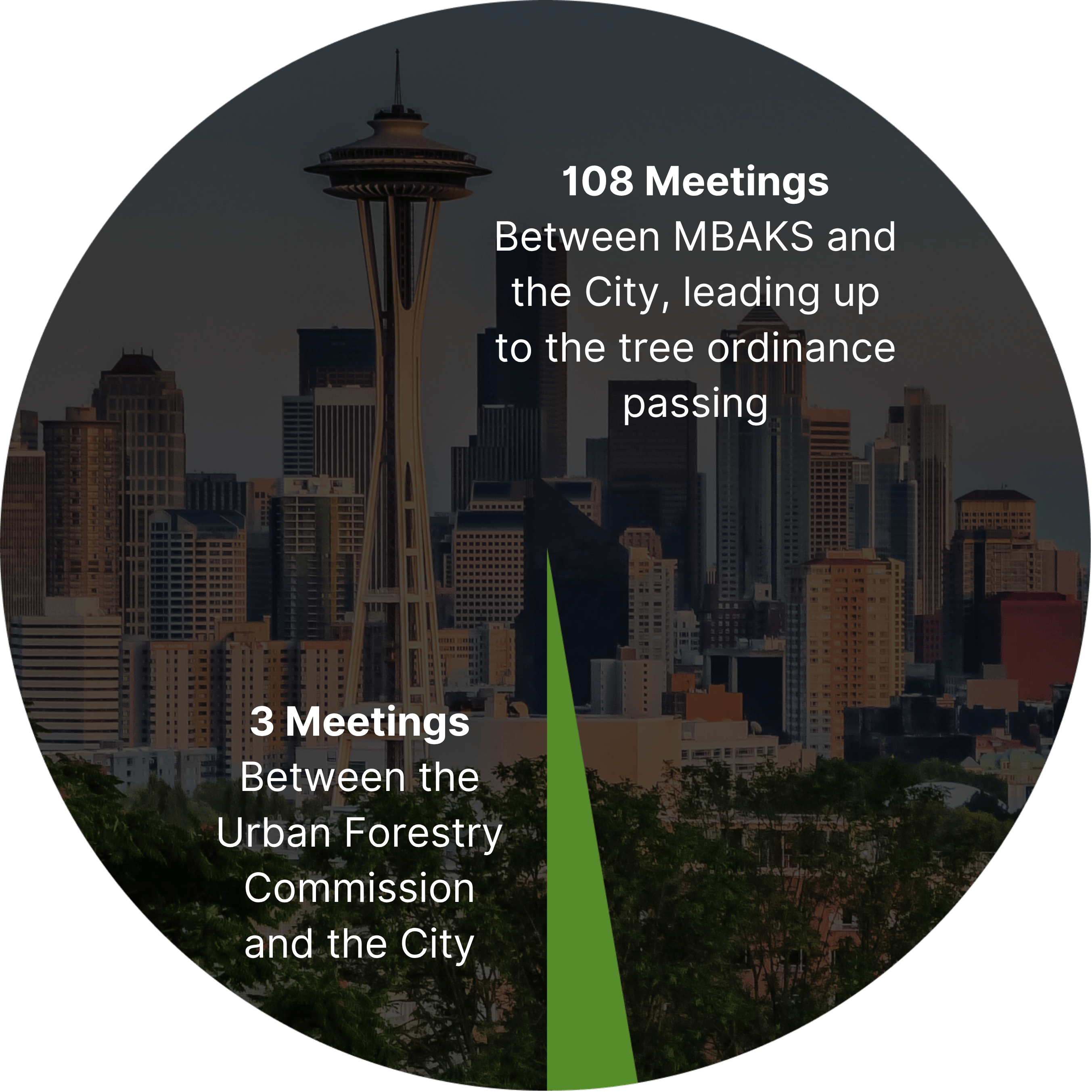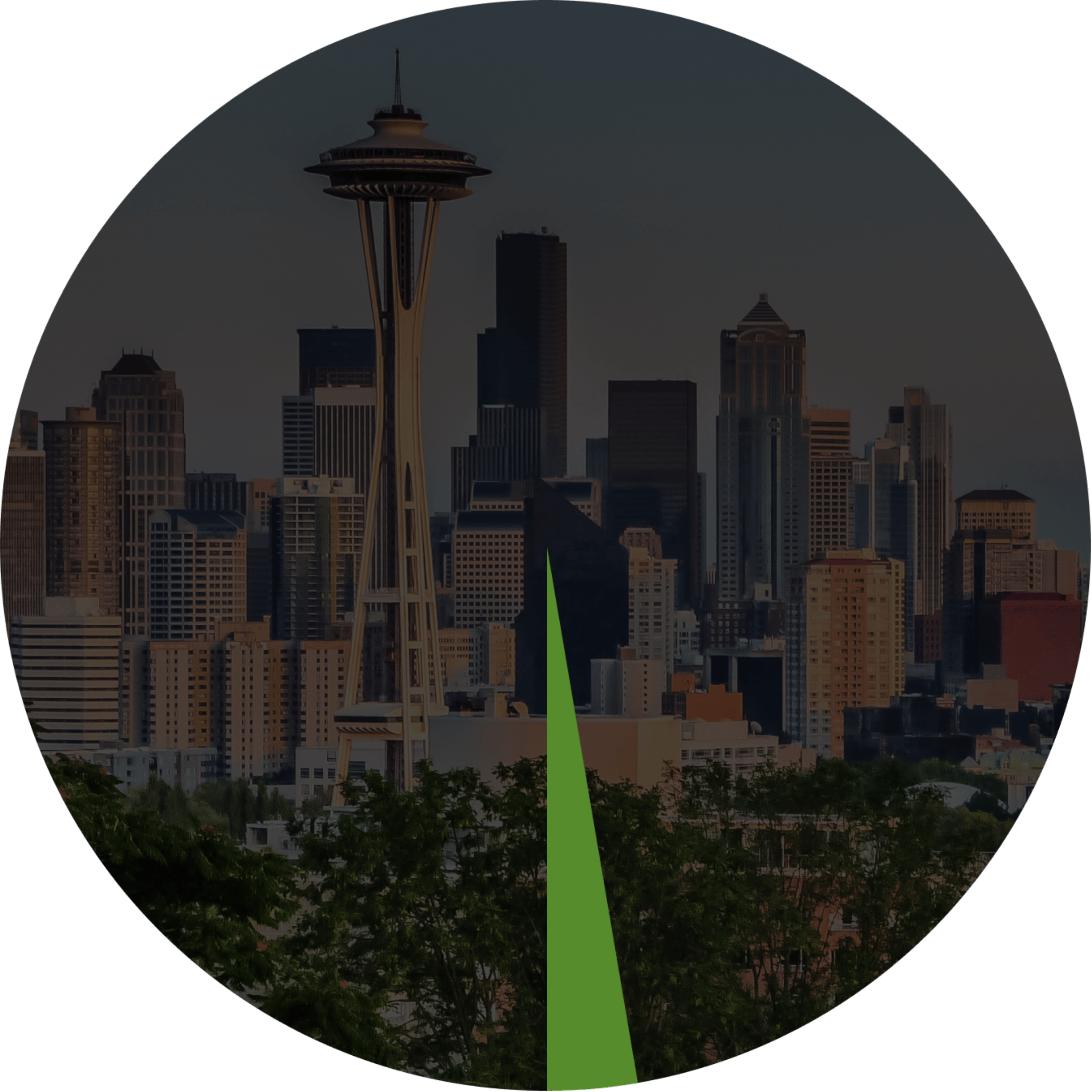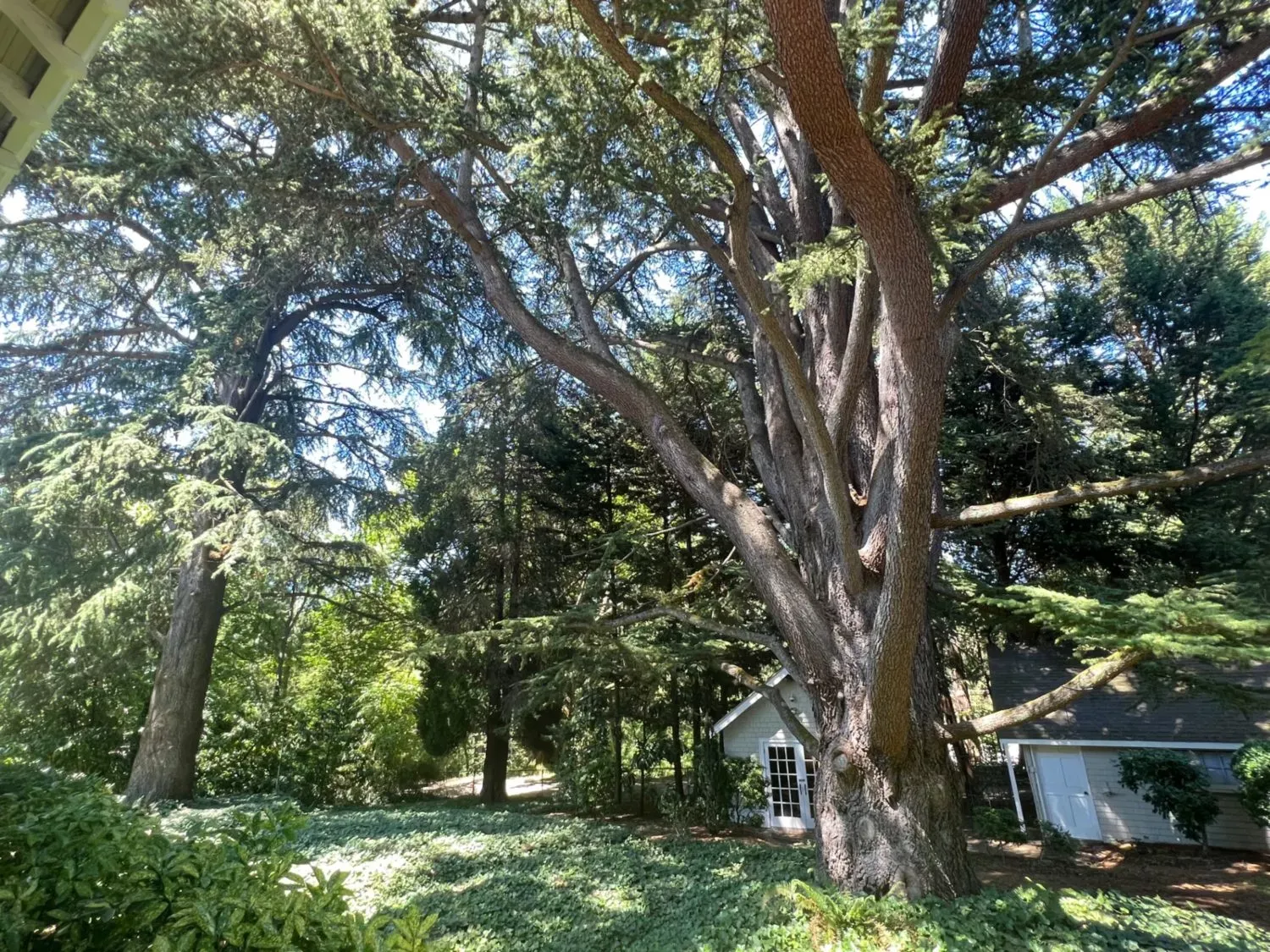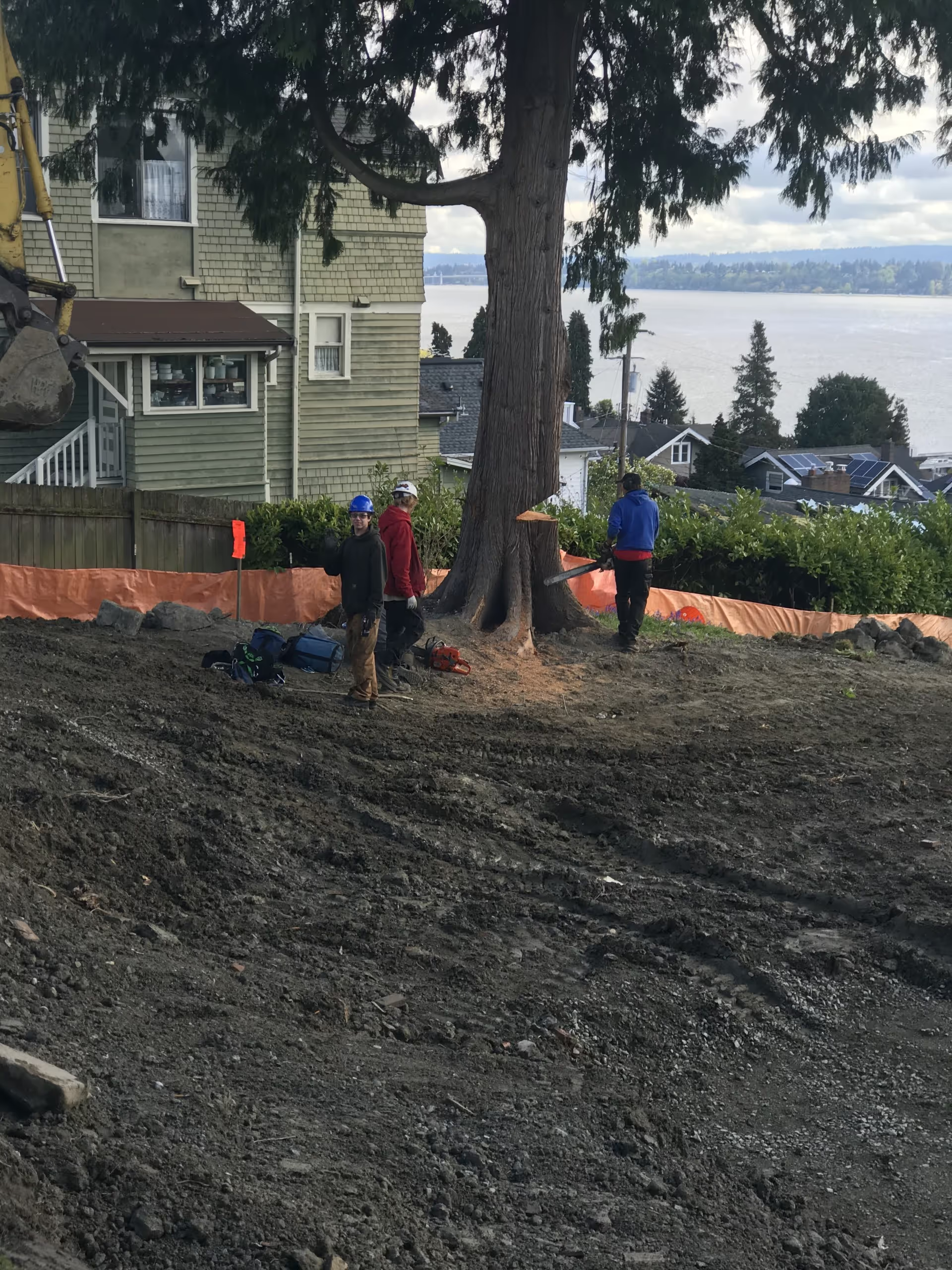


Housing versus trees is the old way of unintelligent planning. Smart infill design builds homes around existing trees. We can have both — we just need to ask for it.













%20(1)_11zon.avif)
First: The Climate. Trees provide climate resilience to our city. In an era of extreme weather events, it's crucial that we build our climate infrastructure so we can keep ourselves and our environment safe.
Second: Equity. Our city is already top 5 in the nation for urban heat islands, which exacerbate pollution's effects, especially for our frontline communities like South Park and White Center. People who live here are less likely to afford air conditioning, and already have the fewest trees. We are stacking the deck against our most vulnerable communities.
Still not enough to convince you? Third: Public Health. Trees provide mental and physical health benefits. They encourage physical activity and are associated with reduced levels of stress, depression, and chronic diseases.
No, we aren’t. We are asking for two main things:
Many cities have better tree codes and better enforcement. Here are some examples:
Replanting trees doesn’t negate the need to preserve trees we have. The older trees get, the better they are at providing climate and health benefits to us. Per inch of trunk, young trees are less efficient at absorbing CO₂, filtering runoff, and more.
"Tree preservation should be the cornerstone of any practical urban forest policy, because it’s the cheapest action as well as the most obvious. You don’t need a shovel to preserve trees, just some common sense.” – Tacoma Tree Foundation
We also need existing trees to make replanting programs work. Saplings need mature trees to provide them with nutrients and shade to grow; it's much harder to grow trees for the future if we remove the trees we already have.
To reach 30% tree canopy, which science says is the minimum needed to survive climate impacts, we need trees in residential areas (sources: Journal of Forestry Research, JAMA Network Open & International Journal of Epidemiology).
Even if we packed our public land with trees — with trees in all right-of-ways and even in baseball fields — we’d only get to 18%, missing the mark. Two-thirds of Seattle's current urban forest grows in residential zones.
Yes, we can have housing and trees. Housing versus trees is a false dichotomy, but construction companies try to convince the public otherwise.
In 2024, over 2,000 trees have been removed. The single largest reason to cut healthy, large trees was for construction projects.
Here’s the catch: almost all of the removed trees were on infill lots, which already had buildings on them — meaning the trees were on the perimeter of the property, not in the buildable area. Evaluations by certified architects show that in almost all instances, builders could have kept these large trees and developed the maximum amount of housing that the zoning code allows.
The developer lobby — who influenced, lobbied for and helped pass the current tree ordinance against the advice of scientists, advocates and the Urban Forestry Commission — has tried to fight us on that point. In 2021, it claimed that trees on properties reduce its ability to build housing and therefore drive down profits. Seattle’s hearing examiner took no time to slash down that argument. After reviewing nearly 100 pages of notes and three days of testimony, the hearing examiner determined that MBAKS’ argument was unequivocally false.
Learn more from The Seattle Times, and check out our blog post on simple ways to build with trees.
An ordinance that requires all property owners to have the same amount of space for trees — whether preserved or planted — is an even playing field and does not diminish individual property rights.
Just like the city requires homes to have safe wiring, fire escapes, and functioning plumbing, requiring trees is a way to ensure that properties meet basic standards that benefit both individual homeowners and the broader community.
First: The Climate. Trees provide climate resilience to our city. In an era of extreme weather events, it's crucial that we build our climate infrastructure so we can keep ourselves and our environment safe.
Second: Equity. Our city is already top 5 in the nation for urban heat islands, which exacerbate pollution's effects, especially for our frontline communities like South Park and White Center. People who live here are less likely to afford air conditioning, and already have the fewest trees. We are stacking the deck against our most vulnerable communities.Still not enough to convince you?
Third: Public Health. Trees provide mental and physical health benefits. They encourage physical activity and are associated with reduced levels of stress, depression, and chronic diseases.
No, we aren’t. We are asking for four main things:
Many cities have better tree codes and better enforcement. Here are some examples:
Replanting trees doesn’t negate the need to preserve trees we have. The older trees get, the better they are at providing climate and health benefits to us. Per inch of trunk, young trees are less efficient at absorbing CO₂, filtering runoff, and more.
"Tree preservation should be the cornerstone of any practical urban forest policy, because it’s the cheapest action as well as the most obvious. You don’t need a shovel to preserve trees, just some common sense.” – Tacoma Tree Foundation
We also need existing trees to make replanting programs work. Saplings need mature trees to provide them with nutrients and shade to grow; it's much harder to grow trees for the future if we remove the trees we already have.
To reach 30% tree canopy, which science says is the minimum needed to survive climate impacts, we need trees in residential areas (sources: Journal of Forestry Research, JAMA Network Open&International Journal of Epidemiology).
Even if we packed our public land with trees — with trees in all right-of-ways and even in baseball fields — we’d only get to 18%, missing the mark. Two-thirds of Seattle's current urban forest grows in residential zones.
Yes, we can have housing and trees. Housing versus trees is a false dichotomy, but construction companies try to convince the public otherwise.
In 2024, over 2,000 trees were removed. The single largest reason to cut healthy, large trees was for construction projects.
Here’s the catch: almost all of the removed trees were on infill lots, which already had buildings on them — meaning the trees were on the perimeter of the property, not in the buildable area. Evaluations by certified architects show that in almost all instances, builders could have kept these large trees and developed the maximum amount of housing that the zoning code allows.
The developer lobby — who influenced, lobbied for and helped pass the current tree ordinance against the advice of scientists, advocates and the Urban Forestry Commission — has tried to fight us on that point. In 2021, it claimed that trees on properties reduce its ability to build housing and therefore drive down profits. Seattle’s hearing examiner took no time to slash down that argument. After reviewing nearly 100 pages of notes and three days of testimony, the hearing examiner determined that MBAKS’ argument was unequivocally false.
Learn more from The Seattle Times, and check out our blog post on simple ways to build with trees.
An ordinance that requires all property owners to have the same amount of space for trees — whether preserved or planted — is an even playing field and does not diminish individual property rights.
Just like the city requires homes to have safe wiring, fire escapes, and functioning plumbing, requiring trees is a way to ensure that properties meet basic standards that benefit both individual homeowners and the broader community.
